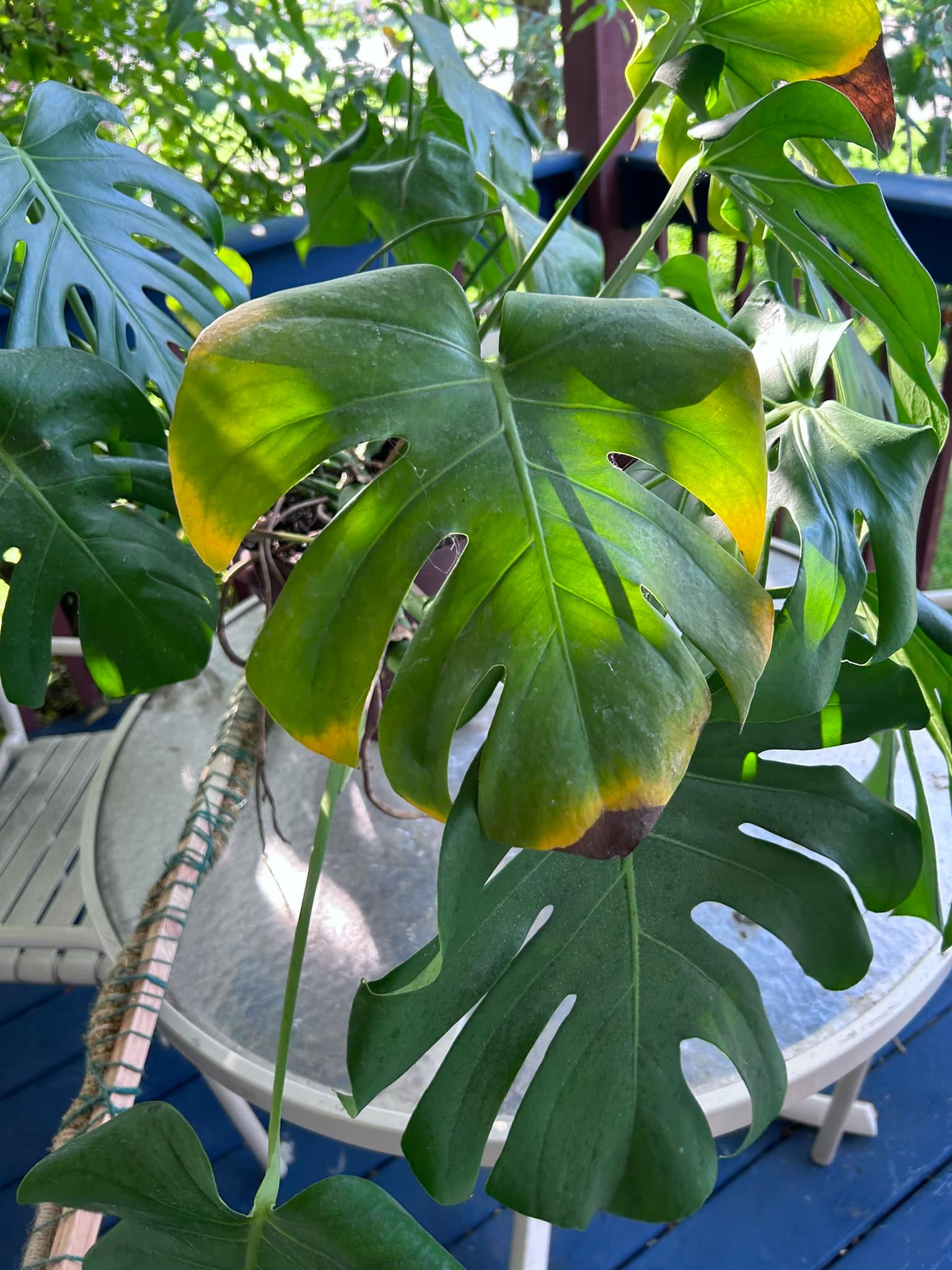
You adore your Monstera—the glossy leaves, the stylish vibe, the way it transforms a room into a green sanctuary. But here’s a tough truth: the quickest way to kill your beautiful plant is by drowning it in kindness. Overwatering is a stealthy assassin, creeping in quietly and wreaking havoc before you even know what’s happening.
So how can you tell when your Monstera’s had a bit too much to drink? Let’s uncover the 7 Silent Signs Your Monstera is Suffering from Overwatering—and how to rescue it before it’s too late.
- across older and newer leaves often suggests excess moisture.
- Check the soil—is it damp days after watering?
- Gently inspect the roots if the problem persists.
How Can You Fix It?
- Allow the soil to dry out partially before watering again.
- Ensure your pot has good drainage holes.
- Consider repotting into a lighter, chunkier soil mix.
2. Mushy, Dark-Brown Roots Instead of White and Firm
What Do Healthy Monstera Roots Look Like?
Healthy roots are firm, pale cream, or white and slightly crisp to the touch. Overwatered roots? Quite the opposite.
- Soft, mushy texture
- Dark brown or even black coloring
- Foul, earthy odor
These are telltale signs of root rot, a devastating condition triggered by persistent moisture.
Can Root Rot Be Stopped?
Yes—but only if caught early!
- Remove the plant from its pot and rinse the roots.
- Trim away all mushy, blackened parts with sterilized scissors.
- Repot into fresh, dry soil in a clean pot.
3. Drooping Leaves Even Though Soil Feels Wet
Why Does an Overwatered Monstera Droop?
It seems counterintuitive, doesn’t it? Drooping usually signals a thirsty plant. But if your Monstera’s soil feels wet and the plant still looks limp, that’s a classic silent sign of too much water.
Here’s why:
- Roots suffocate in soggy soil, cutting off oxygen.
- No oxygen means your plant can’t absorb water properly.
- The result? A plant that appears thirsty despite being waterlogged.
What’s the Solution?
- Let the soil dry out significantly before watering again.
- Consider switching to a chunkier soil mix like one with orchid bark or perlite.
- Avoid watering on a rigid schedule—always check moisture levels first.
4. Brown or Black Spots on Leaves
Are Spots Always a Sign of Disease?
Brown or black spots are alarming to see. But before you panic about pests or fungi, examine your watering habits.
- Soft, watery spots are often a symptom of overwatering.
- The spots may appear near the base of the leaf or spread out randomly.
Excess water invites bacterial growth, which damages leaf tissue from within.
How to Stop Leaf Spot Damage?
- Cut off severely damaged leaves to prevent further stress.
- Allow the plant to dry out between waterings.
- Improve airflow around the plant to reduce moisture build-up.
5. Mold or Algae Growing on the Soil Surface
Why Does My Monstera’s Soil Look Like It Has a Green Carpet?
If you notice a green, white, or fuzzy layer on your Monstera’s soil, overwatering is likely the culprit. Mold and algae thrive in damp, stagnant environments.
Common culprits:
- Constantly wet soil
- Poor light conditions
- Lack of airflow around the soil surface
How Do You Get Rid of Mold or Algae?
- Carefully scrape off the top inch of soil and replace it with fresh mix.
- Reduce watering frequency.
- Increase light exposure and ventilation in the plant’s space.
6. Edema Blisters on Leaves
What on Earth is Edema?
This one often catches Monstera owners off-guard. Edema happens when your plant takes up water faster than it can release it. The result? Pressure builds in the cells, causing them to burst and form small, blister-like bumps.
Signs of edema include:
- Tiny, raised bumps on the underside of leaves
- Corky, rough patches developing over time
How to Prevent Edema?
- Avoid watering late in the day when temperatures are lower.
- Keep humidity levels moderate, not excessive.
- Let soil dry partially between watering sessions.
7. Foul, Musty Smell Emanating from the Pot
Is Your Monstera Smelling Funky?
Take a good sniff near the soil. Overwatering can trigger anaerobic bacteria growth, producing a strong, musty, or sour odor.
If your Monstera’s pot smells:
- Rotten or earthy
- Sour or swampy
…it’s a definite warning sign that the roots are drowning.
How Can You Eliminate the Smell?
- Remove your Monstera from its pot and check the roots.
- Trim away any black, mushy sections.
- Replace the soil completely, ensuring it’s fast-draining.
- Clean the pot thoroughly before replanting.
How Can You Avoid Overwatering Your Monstera Altogether?
Catching the silent signs is crucial—but prevention is even better. Wondering how to keep your Monstera safe from drowning?
Adopt These Simple Habits:
Check soil moisture with your finger or a moisture meter.
- Only water when the top 2 inches feel dry.
Use a well-draining soil mix.
- Incorporate orchid bark, perlite, or pumice for better airflow.
Always ensure pots have drainage holes.
- Water should flow freely out the bottom, not collect at the roots.
Adjust watering based on the seasons.
- Monsteras need less water during winter when growth slows.
Don’t rely on schedules.
- Instead, listen to your plant’s needs and observe changes closely.
